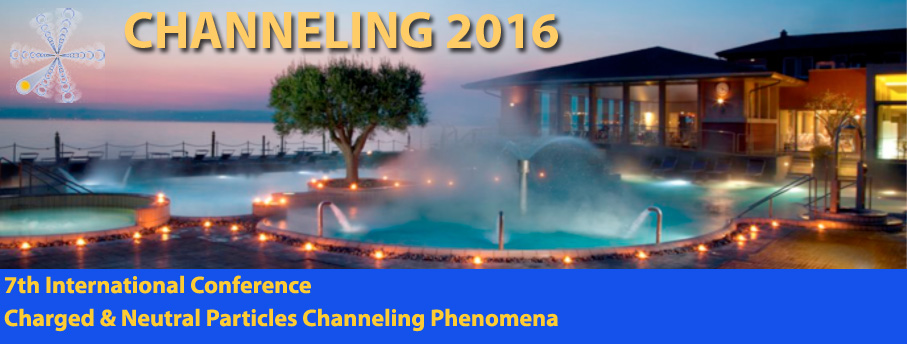Speaker
Dr
Yuichi Takabayashi
(SAGA Light Source)
Description
When a relativistic charged particle is incident on a crystalline target, parametric X-ray radiation (PXR) is produced in the Bragg direction [1]. This radiation process can be regarded as diffraction of virtual photons associated with the incident particle. Recently, PXR has been studied as a new beam diagnostic method [2-5]. In such studies, measurements of PXR angular distributions are important. We have previously reported the results of such measurements for thin Si crystals [6,7]. The purpose of the present study is to extend this research to diamond crystals. Since diamond is resistant to radiation damage [8], it is a promising material for diagnosing the properties of intense beams. Diamond crystals are also interesting as targets for experiments on optical channeling radiation [9] and Cherenkov radiation [10] because they are optically transparent.
The experiments were conducted using a 255-MeV electron beam from the injector linac at the SAGA Light Source (SAGA-LS) in Japan. As a target, a 50-micron-thick diamond crystal was employed. The target crystal was installed on a two-axis goniometer in a vacuum chamber. All experiments were performed using the Laue geometry and the observation angle was 32.2 deg. The Bragg energies were calculated to be 10.9 and 17.7 keV for C(111) and C(220), respectively. X-rays from the crystal were extracted into air through a 250-micron-thick beryllium window. An imaging plate (IP) was used as an X-ray detector [6], and was placed at a distance of 1 m from the crystal. Since IPs offer advantages such as a large detection area, a high spatial resolution, and very good intensity linearity, high-quality data on PXR angular distributions were successfully obtained.
The measured PXR angular distributions were compared with those predicted theoretically and good agreement was obtained. The cause of the slight difference observed around the center position (Bragg direction) is also discussed.
References
1. M.L. Ter-Mikaelian, High Energy Electromagnetic Processes in Condensed Media, Wiley-Interscience, New York, 1972.
2. Y. Takabayashi, Phys. Lett. A 376 (2012) 2408.
3. Y. Takabayashi, K. Sumitani, Phys. Lett. A 377 (2013) 2577.
4. A. Gogolev, A. Potylitsyn, G. Kube, J. Phys. Conf. Ser. 357 (2012) 012018.
5. G. Kube, C. Behrens, A.S. Gogolev, Yu.P. Popov, A.P. Potylitsyn, W. Lauth, S. Weisse, Proc. of IPAC2013, 2013, p. 491.
6. Y. Takabayashi, A.V. Shchagin, Nucl. Instr. Meth. B 278 (2012) 78.
7. Y. Takabayashi, K.B. Korotchenko, Yu.L. Pivovarov, T.A. Tukhfatullin, Nucl. Instr. Meth. B 315 (2013) 105.
8. R. Schwitters, The SLAC Coherent Bremsstrahlung Facility, SLAC-TN-70-32, 1970.
9. K.B. Korotchenko, Yu.L. Pivovarov, JETP Lett. 103 (2016) 87.
10. Y. Takabayashi, E.I. Fiks, Yu.L. Pivovarov, Phys. Lett. A 379 (2015) 1032.
Primary author
Dr
Yuichi Takabayashi
(SAGA Light Source)
Co-authors
Dr
Konstantin Korotchenko
(National Research Tomsk Polytechnic University)
Dr
Timur Tukhfatullin
(National Research Tomsk Polytechnic University)
Prof.
Yury Pivovarov
(National Research Tomsk Polytechnic University)

